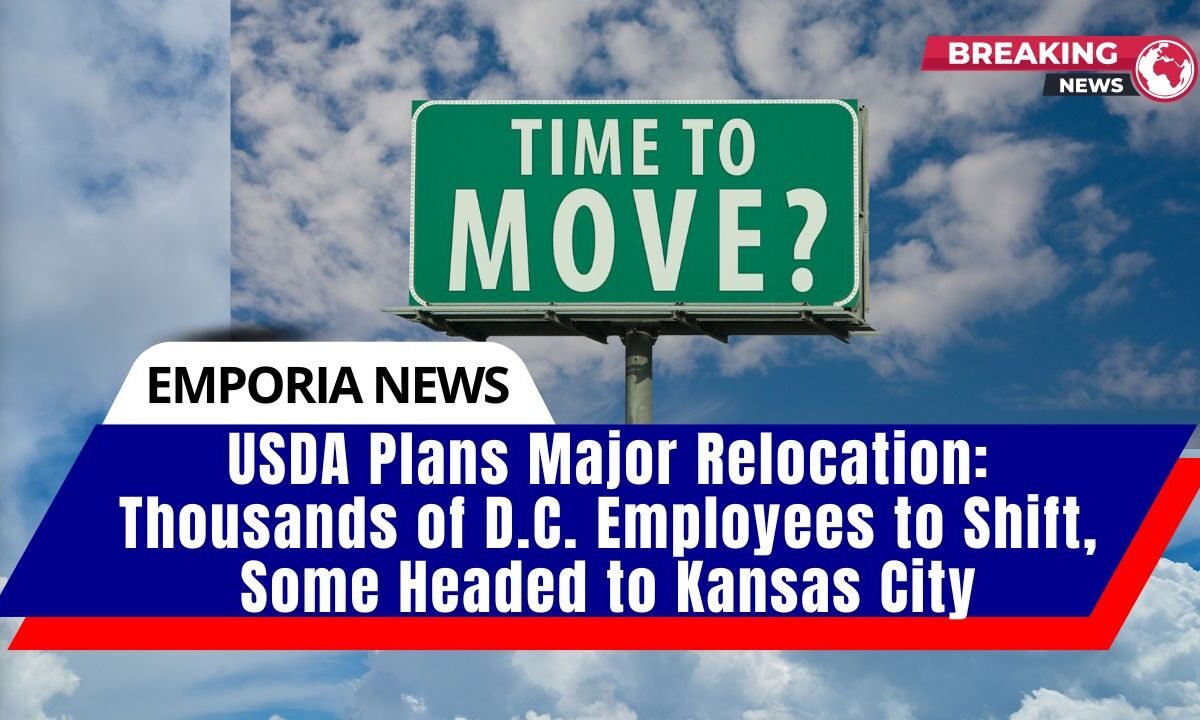The U.S. Department of Agriculture (USDA) is set to relocate more than half of its 4,600 Washington, D.C.-based employees to five regional cities, including Kansas City, Missouri, as part of a cost-saving and community-oriented initiative.
The announcement was made by USDA Secretary Brooke Rollins in a video message to staff on July 23, 2025.
Key Goals Behind the Move
According to Rollins, the USDA is shifting key services out of Washington, D.C., to position employees closer to the communities they serve while also lowering operational costs. The relocation is expected to provide employees with a more affordable cost of living, reducing the need for high federal locality pay adjustments.
“This reorganization ensures USDA employees are embedded in the communities they support,” Rollins emphasized. “It also enables us to operate more efficiently by reducing costs associated with D.C.-based employment.”
Salary Adjustments and Locality Rates
Currently, USDA workers in the D.C. metro area receive a 33.94% federal salary locality rate—among the highest in the country. In contrast, Kansas City employees receive only an 18.97% adjustment, reflecting the city’s lower cost of living.
By relocating employees to regional hubs like Kansas City, Salt Lake City, Fort Collins, Indianapolis, and Raleigh, the agency expects significant salary savings.
Impact of the Deferred Resignation Program
Rollins clarified that the plan is a restructuring effort rather than a mass layoff. It factors in participation in the Deferred Resignation Program (DRP), which gave over 15,300 USDA employees the option to resign with an eight-month paid exit period.
The relocation aligns with broader efforts started under the Trump administration to reduce federal staffing and spending.
Kansas City’s Ongoing Role in USDA Operations
Kansas City has a long-standing relationship with the USDA. In 2019, under Agriculture Secretary Sonny Perdue, the department moved its Economic Research Service and National Institute of Food and Agriculture from D.C. to Kansas City.
The move, however, resulted in the departure of over half the workforce in those agencies, leading to productivity declines and a loss of institutional knowledge, as noted in a Government Accountability Office (GAO) report.
What Happens Next
This marks the first phase of what Rollins described as a “multi-month reorganization.” In the coming weeks, USDA leadership will provide individual offices with relocation details and timelines.
The department plans to cut its D.C. workforce from 4,600 to around 2,000, though it’s not yet confirmed how many staff will be moved specifically to Kansas City.
The USDA’s latest move signals a continued effort to decentralize federal operations, lower expenses, and place government workers closer to rural communities.
While the full impact on Kansas City and other regional hubs remains to be seen, the shift represents a strategic restructuring of one of the nation’s largest federal departments.




